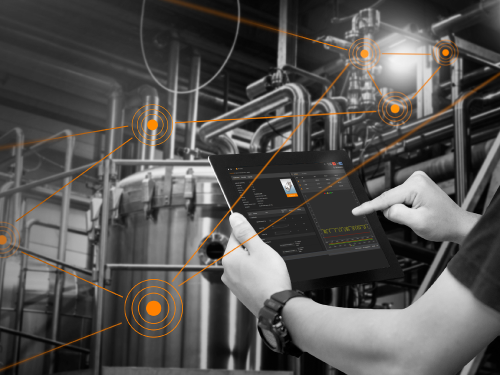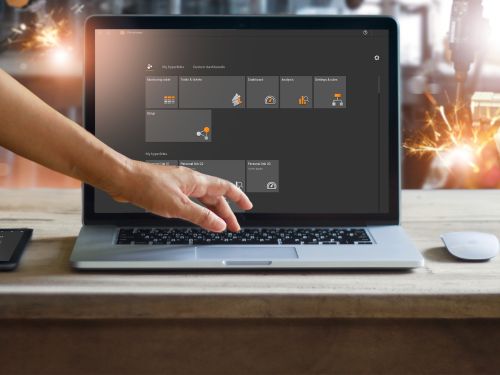- Semiconductor industry
- Industry 4.0 journey
Industry 4.0: Semiconductor process improvements in real time
Industry 4.0 takes automation a step further. Beyond automating plant-level systems, it unlocks trapped data from sensors, valves, and other devices. This data can be converted into actionable insights, improving processes in real-time, even from remote locations. Using an edge processor implemented with machine-specific algorithms, you can predict, fine-tune, and improve processes at the individual machine level.
Common applications for smart wafer fabrication
Smart manufacturing initiatives during wafer fabrication can have significant impact on operations. The following examples show how connected machinery can help streamline operations and ehnance efficiency with real-time access to production data.
Real-time monitoring of ultrapure water
Implement conductivity sensors, flow sensors, and level sensors with IO-Link technology for continuous monitoring. Receive alerts if values drift outside of predetermined thresholds, so you always have confidence in your ultrapure water systems. Use your data optimize supply chain planning of raw materials needed to keep production up and running.
![]()
![]()
Vibration monitoring on dry vacuum pumps
Vibration monitoring with edge computing means your data is secure onsite. You can still send data to localized software for trend analysis to predict and optimize maintenance schedules. Determine whether pre-programmed IO-Link vibration sensors or more flexible programming is required based on your application.
![]()
Your Industry 4.0 readiness checklist
Digital transformation can be simple if you take a strategic approach from the beginning.
- Strategic alignment: Define the objective for adopting Industry 4.0. Start with one application or case study that aligns with an important overall business goal.
Could reducing energy costs or water consumption increase your profitability?
Would ensuring 100% availability of a critical machine during peak production times help you meet increased customer demand?
Could trending vibration data from critical equipment help you predict failure & optimize maintenance schedules?
- Evaluate & build your technology stack: Do you have the right technologies to support an IIoT initiative and are they ready to scale without involving integration specialists or consultants?
- Digital technology selection: Identify suitable technologies such as connected sensors, communication protocols, and automation companies that can deliver the information you need to prove the concept will work.
- Technologies should deliver on a proof of concept and easily scale for a successful implementation
- Technologies that provide flexibility in communication protocol help you avoid locking your data into proprietary systems
- Data integration: Ensure that your data sources are designed to integrate with other system architecture technologies. Selecting the right agnostic technologies allows you to seamlessly send your machine data to many software options.
- Process optimization: To adequately measure return on investment, you will need to benchmark your current processes with automation and visualization of data collection. This allows you to communicate the success of an initiative quickly.
- Process mapping: Document and analyze existing processes to identify areas for improvement.
- Automation opportunities: Identify tasks that can be automated to enhance efficiency.
- Lean implementation: Implement lean practices to reduce waste and streamline production.
- Quality control technologies: Adopt advanced quality control technologies for continuous monitoring and improvement.
- Monitoring & analytics: Implement real-time monitoring and analytics to measure performance and drive continuous improvement.
Adopting Industry 4.0 initiatives in a semiconductor manufacturing facility requires a strategic approach to ensure you do not sacrifice product quality or security. Selecting and investing in the right technologies from the beginning can help to ensure a successful transition. This checklist can serve as a starting point to help you assess if you have the resources to start an Industry 4.0 initiative.
Ready to get started?
Start your smart manfacturing initiative by taking the next step.
- Visit the Discover IO-Link page to learn more about the foundational technology that is driving connected machinery.
- Explore solutions by machine.
If you still have questions or want a personalized approach, contact our US semiconductor industry engineering specialist to discuss solutions for your wafer fabrication facility.
![]()


